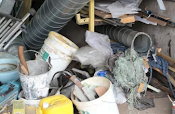Genetic and Neurochemical Factors That Lead to Mood Disorders
- Family and twin studies suggest that there is a moderate genetic contribution to major depressive disorder (MDD).
- The serotonin-transporter gene is one candidate gene that may be involved in MDD.
- A study by Caspi and colleagues found that people with the short allele of the serotonin-transporter gene were more likely to develop MDD if they had experienced four or more stressful life events in the past 5 years.
- However, a later study by Risch and colleagues challenged these results.
- A more recent study by Culverhouse and colleagues found that the genotype-environment interaction between the serotonin-transporter gene and stressful life events does not exist.
These findings highlight the importance of replication in the scientific process, as well as the difficulties associated with mapping links between subtle variations in the human genome and the occurrence of depressive illness (Hooley et al, 2019)
- The monoamine theory of depression states that depression is caused by a depletion of the neurotransmitters norepinephrine and serotonin.
- Not all patients with depression have low levels of these neurotransmitters, and even when levels are low, they may not return to normal after treatment with antidepressant medication.
- More recent research suggests that dopamine dysfunction may also play a role in depression. Dopamine is involved in the experience of pleasure and reward, and its depletion may contribute to the anhedonia (inability to experience pleasure) that is a common symptom of depression.
No single theory of depression has been able to fully explain the disorder. However, research suggests that depression is caused by a complex interplay of genetic, environmental, and biological factors.
References
Hooley, J. M., Nock, M. K., & Butcher, J. N. (2019). Abnormal Psychology (18th ed.). Pearson Education (US). https://bookshelf.vitalsource.com/books/9780135191033
















